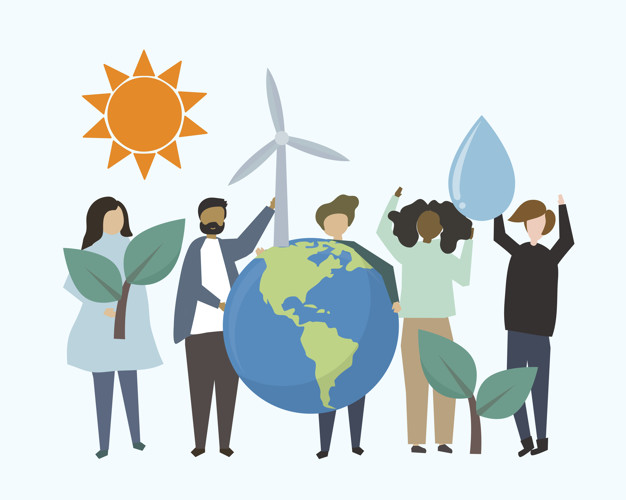Can we see mass adoption of this technology without having a good understanding of the intent and desires of its end users? Time the state factored knowledge of stakeholders’ attitude, expectations, intent and his desire while designing interventions.
From being a laboratory level technology, which had niche applications a few decades back, Renewable Energy, particularly Solar along with storage technology now has come a long way. Technological advancement has brought down costs of components and increased production efficiency. Though it’s far from being a dependable alternative source of power because of factors like cost, efficiency and intermittency, it has taken the position of a serious co-source of energy offering a bouquet of solutions to the problems caused by population growth and overuse of conventional sources.
The burning of fossil fuel stands as the single most serious cause of environmental degradation and climate change. [Related Article]
After damaging soil, air and water; we stand at the doorstep of irreversible environmental damage and climate change. The dangers from melting polar ice threaten to inundate coastal human habitations. The rising sea levels and loss of habitable land stand to cause huge social upheavals. The poorest of the countries stand to get affected the most. All the countries have woken up to the impending catastrophe which stands to challenge human existence. They have resolved to develop and respond to a unified climate change mitigation objective. The difference in response of one state from that of the other is because of the difference of their own political, sociological and economic compulsions.
The consolidated response would only be the outcomes of those factors and the statesmanship of their leaders. [Related Article]
State intervention in the RE sector of late has been driven by various consideration and to achieve certain objectives. It has been in the form of policy change, social investment and by commissioning many other promotional offers like subsidies and viability gap funding. Currently, the state intervenes in almost all the sectors with solutions like home electricity, drinking water systems, irrigation systems to utility-scale power plants. From solar powered micro equipment like lanterns and small home electrifying systems to small, medium and large rooftop solar systems the state promotes its use across all application platforms. Changing from its earlier policy of covering only the villages where grid power will not be supplied, the state now is intervening with micro and mini off-grid solutions where the grid has failed to supply quality power. It has been realised that their per capita Capex is a lot lower in the case of RE as compared to the conventional power. This trend indicates entry of RE from remoteness to more established urban habitations.
The intervention of the state is seeing continuous reconfiguration. [Related Article]
Though mitigation of climate change is the often-stated purpose behind state intervention, access to energy and savings on energy expenses is what would drive the future of renewable energy proliferation. And when it comes to people it’s a no-brainer to say that the proliferation of Renewable Energy use will be driven based on their cost and convenience perspective and not by what the state desires or what role people should play as voluntary environment champion. Experience has shown that even if the above two factors are successfully taken care of, there are many other ground level micro and macro dynamics which affect the installations from running at its full capacity. That shows that the technology is inextricably entwined with the community and its members.
Then how much do we know about the people who will ultimately use it?
Now the big question is that whether the state as the controller of policies and author and owner of interventions has assessed what the potential consumer of this source of energy wants? And has the series of state-run organization which are involved in grounding these projects and the bouquet of organizations which are responsible for establishing thousands of micro installations in the remotest part of the country and maintain for the economic life of the assets are in the know of the end user’s habits and preferences? Are the stakeholders oriented towards the scheme objective? A lot needs to go into designing a scheme than thinking beyond its physical and financial dimensions.
How do we hope to achieve the objective of the scheme without assessing the stakeholders’ desire and intent?


Nice Blog